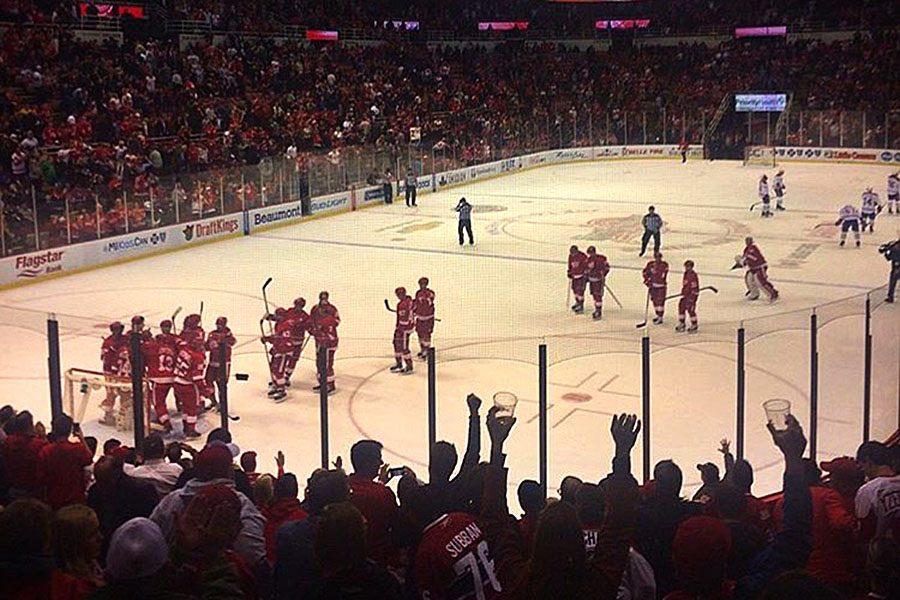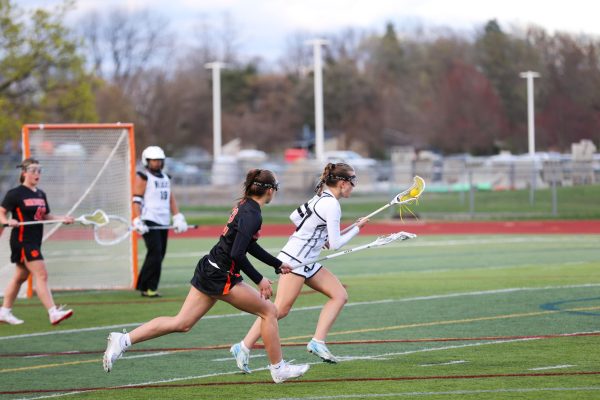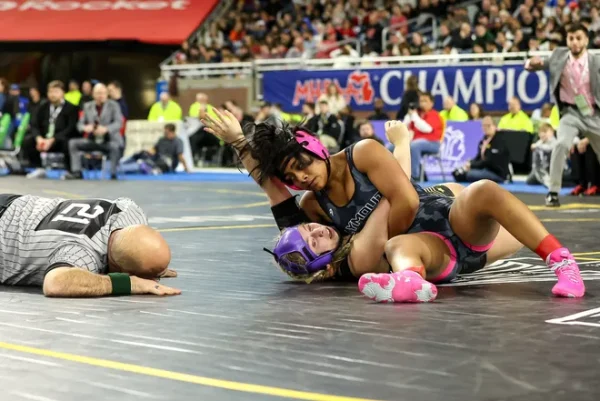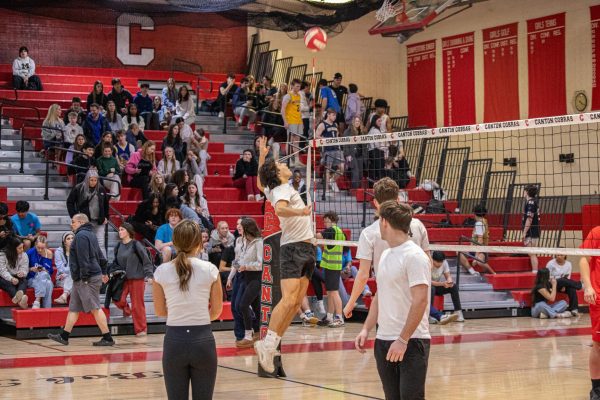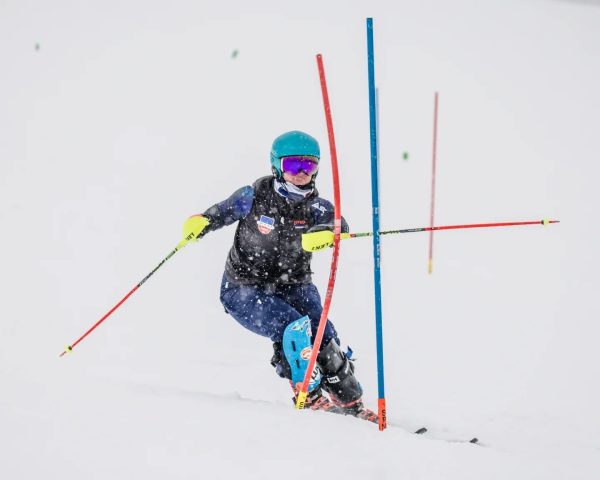Can new additions extend Wings’ streak to 26? (Preview)
With another long summer behind them, the Red Wings find themselves in a familiar position. Another season, another first round exit.
It was evident throughout the season that the Wings were missing key components of a strong and deep team. A consistent scorer, a physical defenseman, and a reliable goaltender.
Starting with scoring, the Wings averaged just 2.55 goals per game during the regular season. That number sunk to a dismal 1.60 goals per game in the playoffs. The power play was one of the worst in the NHL for the entire season, until a two-week hot streak in the last few games.
With Pavel Datsyuk’s return to Russia to be with his family, the lack of “superstars” on the Wings is evident. Henrik Zetterberg sustained a knee injury during off-ice training, but should be ready for the season opener in Tampa on Oct 13.
General Manager Ken Holland was able to sign free agent forward Frans Nielsen from to try and fill Datsyuk’s void. Last season, Nielsen scored 20 goals in 81 games for the New York Islanders.
Holland was also able to obtain forward Thomas Vanek. Vanek is definitely a gamble, but once he gets rolling he can be huge on the power play; he most recently had 41 points in 74 games with the Minnesota Wild.
Holland’s last addition was forward Steve Ott. Known for his grit more than his offense, Holland is hoping Ott’s physicality will help against teams like the Bruins and Flyers, common opponents in the Eastern Conference.
In 2014-15, Gustav Nyquist and Tomas Tatar carried the burden of the teams scoring. When the team needed a clutch goal, Nyquist and Tatar seemed to always be there to help. This year, that was not the case. Nyquist averaged around 0.66 points per game last year, compared to this season at 0.52 points per game. Tatar averaged 0.68 points per game in 2014-15, and 0.55 in this year’s campaign.
Some may argue that Nyquist scored less because he was working more on his defensive game, improving his plus/minus from -11 to -2. However, plus/minus is a very useless stat that does not provide a whole lot of context. While watching Nyquist, it was clear he felt uncomfortable and out of place. Tatar’s plus/minus actually decreased from 6 to 4, and he too did not look the same.
If the Wings are going to make a deep run in the playoffs, they are going to need Nyquist and Tatar to step up. With Datsyuk’s retirement and Zetterberg running out of gas, Nyquist and Tatar need to turn it up a notch or they could be heading out of Hockeytown.
Another key component to the team’s success this season is second-year center Dylan Larkin. Larkin had a phenomenal season, coming out of the University of Michigan and a short stint with the Grand Rapids Griffins. Larkin seems to be the Red Wings’ number one center, easing the work-load of Zetterberg just as he did for Brendan Shanahan.
While Larkin was a bright spot in this dark season, he cannot be the only player on this team producing at a constant pace. Andreas Athanasiou looked promising in many moments, but with the puzzling lack of ice time that he has received, it’s impossible to know how much of an impact he could have.
On the defensive side, Niklas Kronwall is not the same player he was 5 years ago. He’s not even the same player he was last year. With his career on the decline, the Wings need another physical offensive defenseman to take his place.
The best fit for this role is Brendan Smith. Smith plays with an edge, has improved immensely on his defensive game, and knows when to jump into the rush.
Danny DeKeyser is a solid d-man, but he lacks that physical edge, and only shows glimmers of offensive flair.
Mike Green has so far been a decent signing, not impressing, yet not disappointing at the same time. Green too lacks physicality, and his offensive production took a steep decline this season.
Jonathan Ericsson has not performed to the elite level the Wings need him to for success. Prospects such as Robbie Russo, Nick Jensen, and Alexei Marchenko are often benched or sent to the minors in favor of Ericsson, which is truly not ideal. Ericsson must improve his defensive instincts this season, or it could get messy.
Goaltending is a challenging case. In the beginning of the season, both goaltenders were playing at an elite level. Petr Mrazek and Jimmy Howard would rotate almost every game, and it wouldn’t matter. They would both give the team a chance to win every night.
Then December came, and Howard faltered. Enter Mrazek, and the team was on a roll. Mrazek’s amazing, yet unsustainable numbers masked the Wings’ many issues until February.
Howard was called upon to save the team once again, and after a rough start to March was able to execute at a great level. In the playoffs though, Howard was pulled in favor of Mrazek.
Mrazek ranked 15 in the NHL in GAA (goals-against average) with an average of 2.33, and 11 in save percentage with .921. Both are decent, but need to be improved in order for a deep playoff run.
General Manager Ken Holland was able to keep both goaltenders throughout the off-season, and it’s up to them to outperform the other and win the starting job.
There were also some personnel changes, starting with the addition of assistant coaches John Torchetti and Doug Houda, who are in charge of offense and defense respectively.
This season has a sentimental feel to it, and for good reason. It’s the last year at the storied Joe Louis Arena, with the final regular season game on April 9 against the New Jersey Devils. Will it be the last game ever?
It’s hard to say. Overall, the Wings are close. A few more pieces, a few more points, and a lot less mistakes could have changed last season for the better. In today’s NHL though, every team is close.
That’s what makes it fun.
Your donation will support the student journalists of Salem High School - MI. Your contribution will allow us to purchase equipment and cover our annual website hosting costs.
My name is Rachel Quigley and I’m a senior at Salem. I’m also apart of Student Council and Link Crew. I’m a huge sports fan, but I write primarily...


